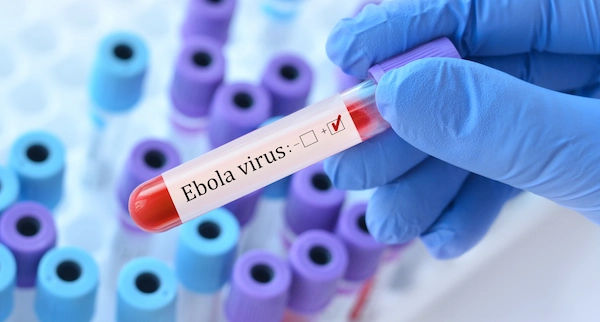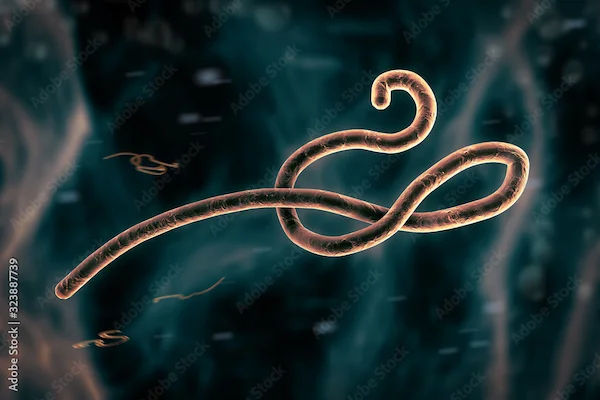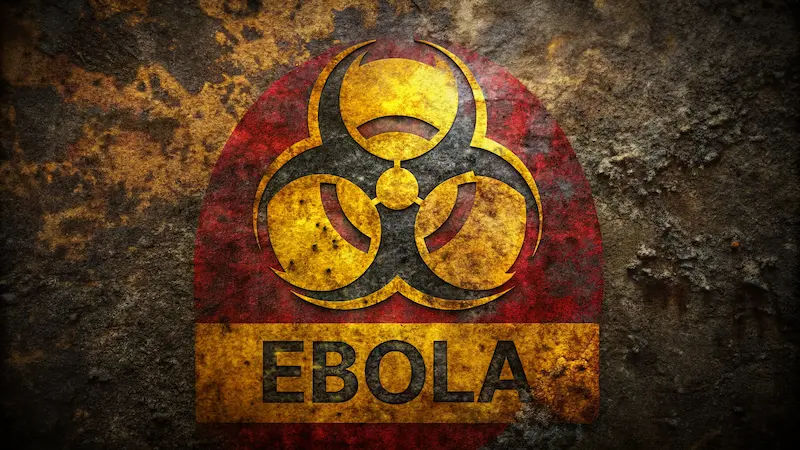Guide to Demystifying Ebola Virus Threat
Explore our comprehensive guide to understanding the Ebola virus, its symptoms, transmission, prevention, and safety measures to stay informed and protected.


Introduction
The word "Ebola" often conjures images of headlines announcing deadly outbreaks, healthcare workers in protective suits, and a general sense of dread. While the Ebola virus disease (EVD) is indeed a severe and often fatal illness, the fear surrounding it frequently outpaces the actual facts. The reality is that for the vast majority of people worldwide, the risk of contracting Ebola is extremely low. This article aims to demystify the Ebola virus threat by providing a clear, evidence-based guide. We will break down how the virus spreads, its symptoms, and the real level of risk it poses to the general public. By understanding the science behind the virus, we can replace anxiety with awareness and focus on the effective prevention strategies that truly matter. Our goal is to empower you with knowledge, separating the alarming myths from the critical truths about this infectious disease.
What exactly is the Ebola Virus?
Ebola virus disease (EVD), formerly known as Ebola hemorrhagic fever, is a rare but severe illness caused by infection with a virus of the Filoviridae family. It was first identified in 1976 near the Ebola River in what is now the Democratic Republic of Congo. The virus attacks various cells in the body, disrupting the immune system and causing widespread inflammation and damage to blood vessels, leading to the characteristic symptoms.
A Brief History of Ebola Outbreaks
Since its discovery, Ebola has caused intermittent outbreaks, primarily in remote villages in Central and West Africa. The largest and most complex outbreak occurred in West Africa from 2014 to 2016, affecting multiple countries and causing significant international concern. This outbreak highlighted the critical importance of robust global health systems and rapid response. More recent, smaller outbreaks in the Democratic Republic of Congo and elsewhere have been contained more effectively thanks to lessons learned and the development of new tools like vaccines.
How Does the Virus Work in the Body?
Upon entering the body through mucous membranes or breaks in the skin, the Ebola virus targets immune cells first. It replicates rapidly, overwhelming the body's initial defenses. The virus then spreads through the bloodstream to the liver, spleen, and other organs. It damages the lining of blood vessels, causing them to leak. This leads to a catastrophic drop in blood pressure and failure of multiple organs. It's this internal damage, rather than dramatic external bleeding, that is the primary cause of death.
How Ebola Spreads (And How It Doesn't) ?
Understanding transmission is the most critical step in demystifying the Ebola virus threat.
Direct Contact: The Primary Route of Transmission
Ebola spreads through direct contact with the blood, secretions, organs, or other bodily fluids of infected people or animals. This means you can only get it by touching these infected fluids and then your eyes, nose, mouth, or a cut on your skin. Transmission typically occurs when caring for a sick person, during burial ceremonies that involve direct contact with the body, or through contact with contaminated objects like needles or bedding. This is why healthcare workers and family members are at the highest risk during an outbreak.
Debunking the Airborne Myth
A pervasive and frightening myth is that Ebola is an airborne virus like the flu or measles. This is scientifically false. The virus is not spread through the air by coughing or sneezing. There is no evidence that casual contact, such as sitting next to an infected person on a bus or walking by them in a store, poses any risk. This distinction is crucial for accurate risk assessment and preventing unnecessary panic.
Understanding the Role of Survivors
Interestingly, the virus can persist in certain body fluids of survivors (such as semen, breast milk, and ocular fluid) for several months after recovery. This means transmission can potentially occur through intimate contact with a survivor after they have left the hospital. However, survivors are provided with guidance and support to prevent this, and it represents a very specific and manageable transmission route, not a general public health threat.
Recognizing the Signs and Symptoms
The incubation period for Ebola—the time from infection to the onset of symptoms—is 2 to 21 days. A person is not contagious until they start showing symptoms.
The Early Stage: Flu-Like Symptoms
The initial symptoms of Ebola virus are nonspecific and can be easily mistaken for more common illnesses like malaria or influenza. They include:
Sudden onset of fever
Severe fatigue and weakness
Muscle pain and headache
Sore throat
Because these early symptoms are so common, it is essential for individuals in or recently returned from an outbreak area to seek medical attention immediately and inform healthcare providers of their travel history.
The Advanced Stage: Severe Hemorrhagic Fever
As the disease progresses, more severe symptoms can develop, which may include:
Vomiting, diarrhea, and stomach pain
Rash
Impaired kidney and liver function
In some cases, both internal and external bleeding (e.g., from gums or in stool)
The term "hemorrhagic fever" can be misleading, as massive bleeding is not universal and occurs in less than half of all cases. The primary causes of death are dehydration and multi-organ failure due to the systemic damage caused by the virus.
Consult an General Physician
Diagnosis and Medical Response
Prompt diagnosis and isolation are key to controlling the spread of Ebola and improving the patient's chances of survival.
How is Ebola Diagnosed?
Diagnosing Ebola based on symptoms alone is difficult. Diagnosis is confirmed through laboratory tests that detect the virus's genetic material or antibodies in the blood. These tests are conducted in high-security laboratories due to the infectious nature of the samples. If you experience symptoms and have a potential exposure history, it is critical to contact health authorities rather than visiting a clinic unannounced to prevent potential spread.
Treatment Options and Supportive Care
There is no proven, specific antiviral treatment for EVD. However, survival rates have improved dramatically with aggressive supportive care, which includes:
Providing fluids and electrolytes orally or intravenously.
Maintaining oxygen status and blood pressure.
Treating other infections if they occur.
Two monoclonal antibody treatments, Inmazeb and Ebanga, have been approved for treating Ebola, significantly improving recovery outcomes. Furthermore, if your condition is complex or you have underlying health issues, consulting a specialist for further evaluation is crucial. If symptoms persist beyond two weeks, consult a doctor online with Apollo24|7 for further evaluation.
Prevention: Your Best Defense Against Ebola
Prevention is the most effective weapon against Ebola, especially in outbreak regions.
Key Strategies During an Outbreak
Practice Good Hygiene: Frequent handwashing with soap and water or using an alcohol-based hand sanitizer.
Avoid Contact: Avoid contact with blood and body fluids of infected people or bodies.
Avoid Bushmeat: Avoid handling or consuming wild animals, particularly non-human primates and fruit bats, in affected areas.
Follow Public Health Guidance: Adhere to travel restrictions and screening measures implemented by health authorities.
The Importance of Vaccines
The Ervebo vaccine has been a game-changer in Ebola prevention. It is highly effective and is used in a "ring vaccination" strategy, where contacts of confirmed cases, and their contacts, are vaccinated to create a protective ring around the outbreak. This tool has been instrumental in containing recent outbreaks.
What is the Real Risk to the General Public?
For people living outside of active outbreak zones in Africa, the real risk of contracting Ebola is infinitesimally small.
Assessing Your Personal Risk Level
Unless you are a healthcare worker treating Ebola patients without adequate protection, a family member caring for a sick person in an outbreak area, or involved in the burial of a victim, your personal risk is virtually zero. The virus does not spread through casual contact, water, or food in non-outbreak countries.
The Role of Global Health Surveillance
The global community is now better prepared than ever. Systems like the World Health Organization's Global Outbreak Alert and Response Network (GOARN) ensure rapid detection and response. International travel protocols, including health screenings at airports, provide an additional layer of security. This robust global health surveillance system is designed to prevent the international spread of diseases like Ebola.
Conclusion: Knowledge Over Fear
The Ebola virus threat, while serious, is often misunderstood and exaggerated in the public imagination. By demystifying how the virus operates—its transmission through direct contact, its identifiable symptoms, and the effective containment strategies in place—we can move from a state of fear to one of informed vigilance. The true story of Ebola in the 21st century is not just one of a deadly pathogen, but of remarkable scientific progress in vaccines and treatments, and of strengthened global cooperation. The key takeaway is that knowledge is our most powerful tool. Staying informed through reputable sources like the WHO and CDC allows us to assess risks accurately and contribute to a rational, rather than panicked, public response to health threats.
Consult an General Physician
Consult an General Physician

Dr Syed Mateen Pasha
General Physician
2 Years • MBBS
Bengaluru
PRESTIGE SHANTHINIKETAN - SOCIETY CLINIC, Bengaluru

Dr. Syed Ismail Ali
General Practitioner
7 Years • MBBS
Hyderabad
Apollo 24|7 Clinic, Hyderabad

Dr. Srujana Mulakalapalli
General Physician/ Internal Medicine Specialist
5 Years • MBBS, MD (GENERAL MEDICINE)
Bengaluru
Apollo Medical Center, Marathahalli, Bengaluru
(25+ Patients)

Dr. Harshendra Jaiswal
General Physician/ Internal Medicine Specialist
12 Years • MBBS , MD (General medicine)
Kolkata
108 DHANA DHANVANTARI Clinic, Kolkata
(25+ Patients)
Dr. Thandra Ramoji Babu
General Physician/ Internal Medicine Specialist
5 Years • MBBS, DNB(General Medicine)
Warangal
Sai Ram multi-specialty hospital, Warangal


